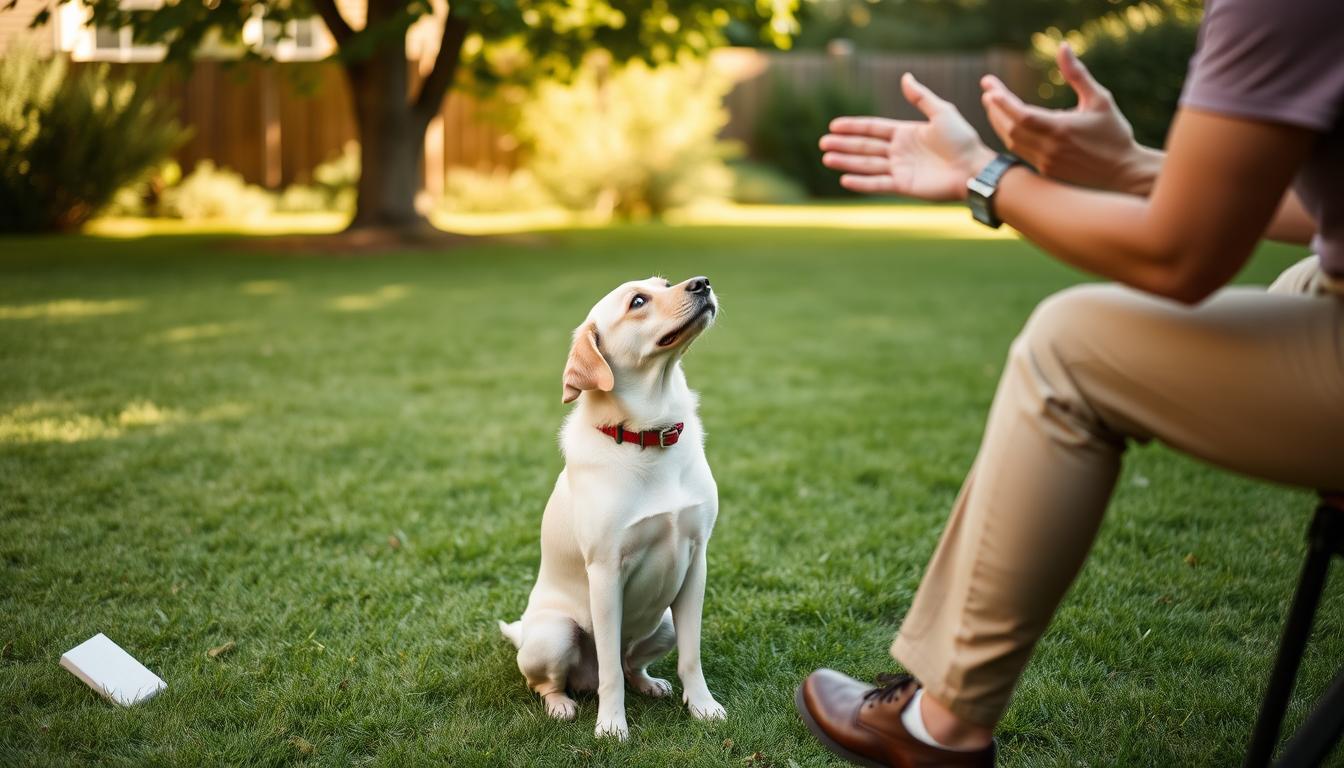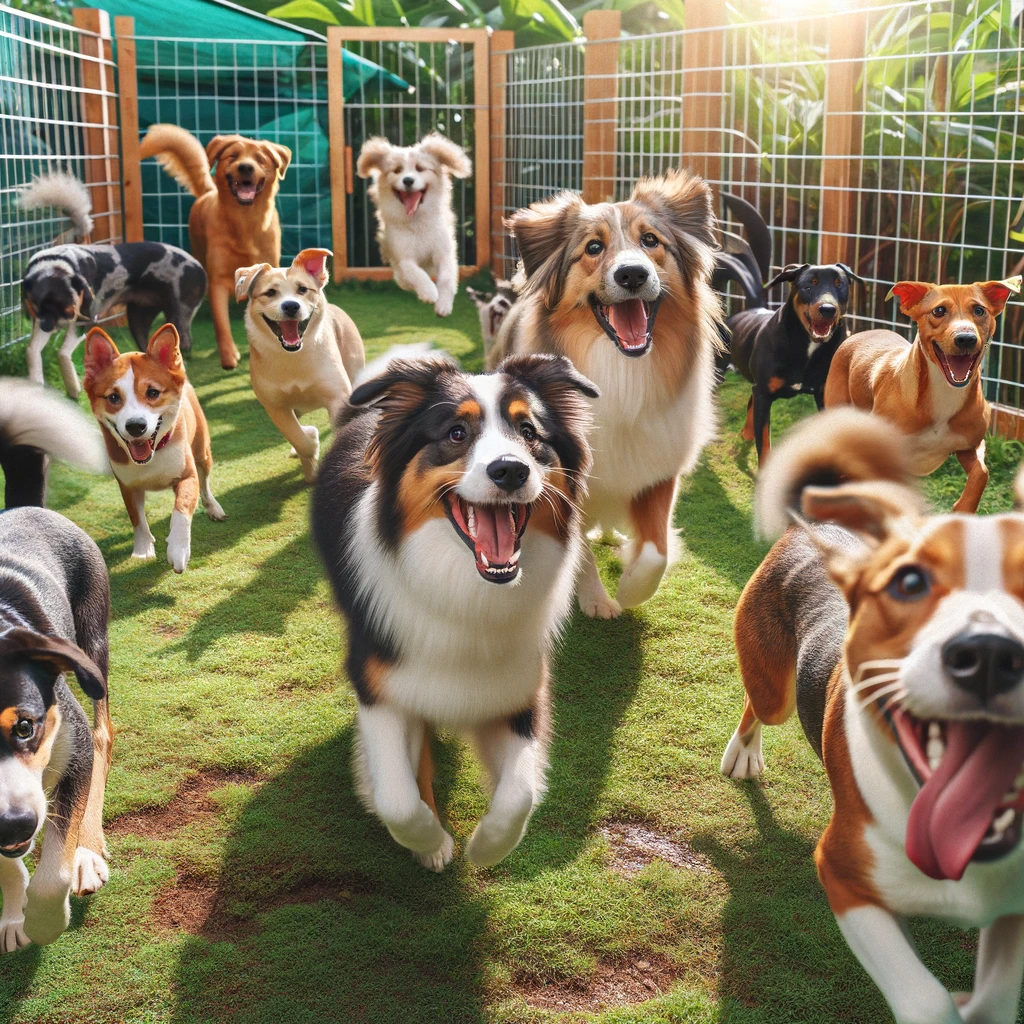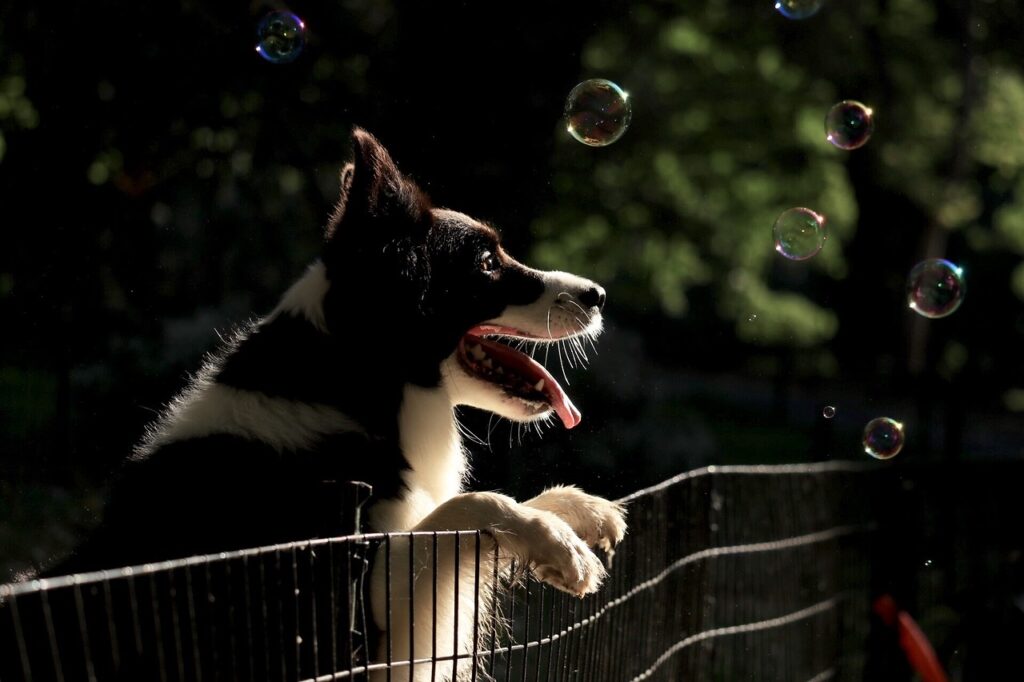This blog contains affiliate links. If you click and purchase through them, I may earn a small commission at no extra cost to you. I only recommend products I trust and would use myself.
Have you ever considered how your dog’s instincts could turn your backyard into a prison break zone? Understanding common dog fence mistakes is essential for securing your pet and ensuring that they don’t venture into danger. Many dog owners unwittingly create conditions for escapes by overlooking critical aspects of their fencing solutions. From incorrect fence heights to neglected underground barriers and gate security issues, these backyard dog fence problems can jeopardize your furry friend’s safety. In this article, we will explore these common errors and provide effective solutions to help you prevent escapes and protect your beloved companion.
Key Takeaways
- Understanding your dog’s jumping abilities is key in choosing the right fence height.
- Neglecting underground barriers can lead to escapes; consider reinforcing the bottom of your fence.
- Wobbly posts and corners can create weak spots in your fence system.
- Regularly inspecting for gaps and loose boards is essential in maintaining fence integrity.
- Choosing the right gate security methods can enhance your overall fencing strategy.
- Understanding your dog breed’s specific fencing needs is crucial for effective yard security.
- Training your dog to respect the boundaries of your yard can significantly minimize escape risks.
Introduction to Dog Fencing Challenges
Creating a secure environment for your dog involves addressing various dog fencing challenges. Many pet owners overlook crucial details that can lead to unexpected escapes. Each dog is unique, with different sizes and temperaments, making it vital to tailor your fencing plans accordingly. Understanding the specific needs of your dog can help you avoid common fencing mistakes for pets, such as using inadequate materials or choosing insufficient height.
To effectively secure a dog fence, consider physical and behavioral characteristics unique to your dog. A reliable fence provides safety while offering peace of mind for you as a pet owner. Assessing local regulations, along with the features of your yard, can significantly enhance your approach to fencing. Taking the time to evaluate these aspects leads to better solutions that will keep your furry friend secure.
Mistake of Not Recognizing Dog Jumping Abilities
Understanding your dog’s jumping capabilities is essential for effective fencing solutions. Many pet owners overlook the significant differences among breeds when assessing their ability to escape. For instance, larger breeds such as Huskies and German Shepherds exhibit impressive agility. On the other hand, even smaller breeds like Chihuahuas can surprise you with their leaping skills. If your dog keeps jumping the fence, you may need to reassess both your dog’s jumping abilities and the height of your fence.
Understanding the Jumping Capabilities of Different Breeds
Every breed possesses unique athletic traits. The jumping abilities of a dog can vary greatly, influencing how high you need to build your fence. For example:
- Large breeds often require higher fences due to their powerful leg muscles.
- Medium-sized breeds may be capable of jumps that exceed their own height.
- Even small breeds should be considered, as some can jump impressively for their size.
Recommended Fence Height Based on Your Dog’s Size
Determining the appropriate fence height per breed is crucial. Typically, a fence should be between 4 to 6 feet tall, depending on your dog’s size and jumping prowess. Fencing that is too low may lead to your dog escaping easily. Owners need to trust that sufficient height can prevent their dogs from leapfrogging over. If your dog keeps jumping the fence, consider solutions like Oscillot’s dog-proof fence kits that incorporate rollers to make climbing much more difficult.
| Dog Breed | Typical Jump Height | Recommended Fence Height |
|---|---|---|
| Husky | Up to 6 feet | 6 feet |
| German Shepherd | Up to 5 feet | 6 feet |
| Beagle | Up to 3 feet | 4 feet |
| Chihuahua | Up to 2.5 feet | 4 feet |
Common Dog Fence Mistakes: Neglecting Underground Barriers
Securing the bottom of your fence is vital for keeping your dog safe and contained. Without proper underground barriers, your furry friend may dig their way to freedom, leading to potential dangers. Many dog owners underestimate the need for these obstacles, often failing to consider how soil conditions and drainage can influence a dog’s digging habits. You can prevent digging by implementing effective solutions to secure the perimeter of your yard.
Importance of Securing the Bottom of Your Fence
When dogs dig, they often target areas near the bottom of the fence where they can find loose soil. This behavior can pose significant risks if not addressed. A secure bottom ensures that your dog stays within your yard, which minimizes the likelihood of escapes that could result in accidents or encounters with other animals. Investing in the right barriers can give you peace of mind, knowing your dog is safe.
Methods to Prevent Digging (Chicken Wire, Rocks)
Several effective methods can help stop your dog from digging under the fence. Here are a few suggested options:
- Chicken Wire: Burying chicken wire along the base of the fence can deter digging. The wire creates an uncomfortable surface that dogs will avoid.
- Rocks: Placing large rocks or boulders along the perimeter adds a decorative element while preventing your dog from digging a tunnel.
Using tools from available dog-proofing kits ensures that you can effectively fix gaps in dog fence. Combining these methods can create a robust barrier that keeps your dog safely contained. Addressing underground barriers is essential for preventing unwanted escapes and reducing stress for both you and your pet.
Weak Fence Posts and Corners
Weak fence posts can lead to significant backyard dog fence problems, allowing your dog to escape with ease. The integrity of your fence heavily depends on how well the posts and corners are anchored. Wobbly posts create gaps that energetic dogs can exploit, so it’s crucial to adopt secure anchoring methods for a sturdy fence.
Risks of Wobbly Fence Posts and Corners
Wobbly fence posts not only compromise the physical barrier but also heighten the risk of dogs finding a way out. These weak points often become escape routes during play or when a dog feels threatened. For instance, an excited dog may push against a weak post, which can lead to the entire structure shifting or collapsing. The potential consequences can be severe, from lost pets to liability issues if your dog were to run off and cause damage.
Secure Anchoring Methods for a Sturdy Fence
To ensure your fence remains steadfast, implement secure anchoring methods when installing the posts. Using concrete is one of the most reliable options; it provides a solid base that effectively counters the force exerted by playful or anxious dogs. Gravel can also be used in conjunction with concrete for added drainage, preventing rot and deterioration of the wood.
- Use a level when setting posts to ensure they stand straight.
- Apply concrete around each post for superior stability.
- Consider using steel brackets for extra support at corners and intersections.
- Conduct regular inspections to maintain the integrity of posts and identify any signs of weakness early.
In summary, focusing on strong anchoring methods will help avoid the common pitfalls associated with weak fence posts, promoting a safe environment for your pets.
Gaps and Loose Boards as Escape Routes
Maintaining a secure dog fence requires vigilance against common fencing mistakes for pets, including unnoticed gaps and loose boards. Even minor breaches can become escape routes for your adventurous dog. Regular inspections help you identify these vulnerabilities before they lead to potential mishaps.
Inspecting for Gaps Regularly
Routine checks throughout your fencing can uncover small gaps that may allow your dog to slip through. Focus particularly on the base of the fence and where panels meet, as these areas are often susceptible to wear and tear. Here are key points to consider when inspecting:
- Walk along the fence line, visually scanning for any visible gaps.
- Check the connection points of fence panels for signs of looseness.
- Ensure that the bottom of the fence stays flush with the ground to minimize digging potential.
How to Fix and Maintain Fence Boards
Addressing loose boards and filling gaps in your dog fence not only prevents escapes but also prolongs the fence’s lifespan. Employ these strategies for effective maintenance:
- Tighten any loose boards using appropriate screws or nails to secure their position.
- Fill gaps with weather-resistant caulking or wood filler to create a solid barrier.
- Consider replacing damaged boards instead of attempting to repair them to maintain structural integrity.
Utilize durable materials suited for your environmental conditions. This proactive approach ensures that your dog remains safe and contained, protecting both your pet and your peace of mind.
Gate Security: An Overlooked Aspect

Many dog owners underestimate the significance of gate security in preventing escapes. Gates often serve as the weakest link in any fencing system, making proper selection and maintenance crucial. It’s important to focus on quality gate latches and ensure that your gate remains functional and secure for your furry friends.
Choosing the Right Gate Latches
Selecting the right gate latches is essential for effective gate security. Look for options that are durable and designed specifically for pet safety. High-quality latches can prevent your dog from accidentally opening the gate. Consider options like slide bolts or dual-action latches for added protection against unintentional escapes.
Best Practices for Gate Installation and Maintenance
Understanding the best practices for gates enhances security. Ensure the gate is tall enough and that it closes securely after each use. Regular inspections are vital; check for any signs of wear or damage that may compromise security. Installing self-closing mechanisms can offer an additional layer of safety, reducing the risk of forgetfulness leading to escape. Thorough attention to the gate’s condition is as necessary as maintaining the fence itself.
The Wrong Fence Type for Your Dog Breed
When it comes to securing your pet, understanding the specific requirements of different dog breeds is crucial. The wrong fence type for dog breed can result in escapes or, worse, compromise your dog’s safety. Different breeds exhibit unique physical capabilities and behavioral tendencies, leading to varying fencing needs. Recognizing these breed-specific needs is essential in choosing the right fence solution.
Breed-Specific Needs for Effective Fencing
Each dog breed has its unique characteristics that impact its fencing requirements. For example, high-energy breeds like Border Collies may require robust, tall fences to prevent jumping or digging. In contrast, smaller breeds such as Chihuahuas may need lighter fencing options that prevent escape without overwhelming their smaller stature. Choosing breed-specific fencing reduces the chances of misunderstandings that can lead to your pet’s escape.
Examples of Suitable Fencing for Popular Breeds
| Dog Breed | Recommended Fence Type | Height Requirements |
|---|---|---|
| German Shepherd | Stockade or Privacy Fencing | 6 feet |
| Beagle | Chain Link or Vinyl Fencing | 4-5 feet |
| Greyhound | Wood or Wrought Iron Fencing | 5-6 feet |
| Poodle | Picket Fencing | 4-5 feet |
Selecting the right type of fence aligned with your dog’s breed significantly enhances the chances of successfully securing your pet and preventing escapades. Always take time to research and invest in a fencing solution that caters to your dog’s unique needs for the best outcomes.
The Importance of Training in Preventing Escapes

Training your dog plays a vital role in keeping them safe and ensuring they stay within your yard. Even the best physical fencing cannot replace the benefits of proper obedience training. When you invest time in training, you not only strengthen the bond with your pet but also instill respect for boundaries. Understanding how to keep your dog from escaping the yard requires more than just barriers; it starts with teaching them essential commands and behaviors.
Combining Obedience Training with Fencing Solutions
Obedience training focuses on establishing clear communication between you and your dog. Use positive reinforcement methods, such as treats and praise, to encourage good behavior. Teaching commands like “stay” and “come” significantly reduces the likelihood of escape attempts. Pair these training techniques with effective fencing solutions to create a comprehensive approach to your dog’s safety.
Setting Up Positive Associations with Yard Space
Making the yard an enjoyable place for your dog can minimize their desire to escape. Provide engaging toys and activities that stimulate your dog’s mind. With regular playtime, they may find the yard more fulfilling, decreasing their chances of seeking excitement outside the fence. Your goal should include creating a space where they feel comfortable and secure, reinforcing the idea that staying within the yard is enjoyable.
Conclusion
Addressing common dog fence mistakes is essential for creating a safe environment where your dog can thrive. By recognizing the weaknesses of your current fencing strategy, you can proactively implement solutions to prevent escapes. Investing in the right materials, from robust fence heights to secure gate latches, ensures that your furry friend remains protected and happy in their designated space.
Training your dog should go hand-in-hand with your fencing efforts. Building a positive association with your yard encourages your dog to appreciate their surroundings while adhering to boundaries. Regular inspections of your fence for loose boards or gaps will help maintain the integrity of your barrier, reinforcing your commitment to making your dog yard safe.
A well-executed fencing solution not only protects your pet but also fosters trust and harmony between you and your dog. Remember, diligence in maintenance and a focus on your dog’s breed-specific needs will significantly contribute to an effective fencing strategy. Always strive to create an aesthetically pleasing yet functional setup that benefits both you and your beloved companion.
FAQ
How can I keep my dog from escaping the yard?
To prevent your dog from escaping, ensure your fence is the right height for your dog’s breed. Use durable materials, secure all gaps, and consider underground barriers to stop digging.
What should I do if my dog keeps jumping the fence?
If your dog continually jumps the fence, consider increasing the height to between 4 to 6 feet. You can also install products like Oscillot’s dog-proof fence kits that prevent jumping.
What are some common fencing mistakes that I should avoid?
Common mistakes include using inadequate materials, neglecting fence height, failing to secure gaps, and not considering your dog’s specific behavior and capabilities.
How do I address backyard dog fence problems?
Regular maintenance is key. Inspect for loose boards and gaps, reinforce weak posts, and ensure gates are secure. Also, evaluate if the fence type suits your dog’s needs.
What materials are best for securing a dog fence?
Opt for weather-resistant materials such as vinyl, wood, or chain-link. Ensure the installation is sturdy, particularly at the base and fence posts, to withstand your dog’s activity.
How can I fix gaps in my dog fence?
Fill gaps with wood, metal strips, or concrete. Regularly inspect your fence for wear and perform necessary updates to maintain a secure barrier.
What can I do if my dog digs under the fence?
To prevent digging, install an underground barrier, such as chicken wire buried a few inches in the ground. Alternatively, place heavy rocks along the perimeter to deter digging.
How often should I inspect my dog fence?
You should conduct regular inspections at least once a month to look for loose boards, gaps, and the overall structural integrity of the fence to ensure it remains secure.
What should I consider when choosing a gate for my dog fence?
Select a gate with a high-quality latch, secure closure mechanism, and ensure it is tall enough. Consider self-closing mechanisms to enhance security.
How can training help in preventing my dog from escaping?
Training your dog in basic obedience can reinforce boundaries and reduce escape attempts. Positive reinforcement can help build a positive association with your yard space.
This blog contains affiliate links. If you click and purchase through them, I may earn a small commission at no extra cost to you. I only recommend products I trust and would use myself.





